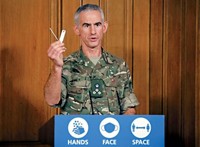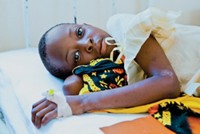Advertisement
Grab your lab coat. Let's get started
Welcome!
Welcome!
Create an account below to get 6 C&EN articles per month, receive newsletters and more - all free.
It seems this is your first time logging in online. Please enter the following information to continue.
As an ACS member you automatically get access to this site. All we need is few more details to create your reading experience.
Not you? Sign in with a different account.
Not you? Sign in with a different account.
ERROR 1
ERROR 1
ERROR 2
ERROR 2
ERROR 2
ERROR 2
ERROR 2
Password and Confirm password must match.
If you have an ACS member number, please enter it here so we can link this account to your membership. (optional)
ERROR 2
ACS values your privacy. By submitting your information, you are gaining access to C&EN and subscribing to our weekly newsletter. We use the information you provide to make your reading experience better, and we will never sell your data to third party members.
Environment
Low-Cost Diagnostics
June 1, 2009
| A version of this story appeared in
Volume 87, Issue 22
THE ARTICLE on low-cost diagnostics is interesting (C&EN, March 16, page 50). One issue that is essentially ignored in discussing diagnostics for resource-limited countries is relevance of the technology and affordability of the assays. I and others have questioned many of the efforts that have been made to deal with CD4 cells, which are diagnostic of HIV infection, for example.
The devastating impact of HIV/AIDS
in Africa has been used by several companies to promote their entry into that continent using promotions that are frequently disingenuous at best and unethical at worst. When companies promote their technologies as being focused on Africa and resource-poor settings, the implication is that they will bring these technologies to bear on these regions. However, many companies use the interest and value of Africa to promote themselves in the media. When it comes to providing something that is useful and that works, however, they fail. They give a false impression in our own society that the problems of resource-poor countries are being solved and give false hope to those most in need.
Governments and private foundations are quick to fund high-profile next-generation fixes, but when these programs are evaluated, the results are very poor indeed. It's a pity that those making grandiose claims are not called to answer for their failure to deliver. We frequently hear of scientists promoting a chip that will cost a couple of cents for a test, but in reality, it never appears, or it actually costs $10 or more. People making claims should be required to account for their actions.
It's also distressing that so many promote the concept that instruments are really not necessary—that all things can be developed using visual/color change reactions, for example, without having to design and build low-cost but still moderately clever instruments. This has been the case with CD4 for HIV/AIDS. The promotion of "technology-less" solutions has not been successful.
For example, as noted in the article, half of the projects funded by the Imperial Colleges Gates grant (and presumably a significant amount of money) have failed to produce results. Had this project been subject to careful evaluation, many of the proposed projects would not have been attempted. In the meantime, conventional and easily achievable solutions are ignored because they are not "next-gen" enough.
Clearly, next-generation solutions for many medical problems are needed, and I believe it is a laudable goal to try to bring these solutions to the table. The problem is that we start to believe the hype presented by many scientists and perhaps even more by businesses trying to raise funds.
Perhaps it is better to consider a reductionist-engineering approach through which current mature and effective technologies are reengineered to solve specific problems rather than focus so much on implausible and ineffective next-gen solutions. The problem, of course, is that such programs won't get funded. It's just not next-generation science. It's a pity that people die every day waiting for the promised next-gen solutions. Most will never come.
J. Paul Robinson
West Lafayette, Ind.
I WAS EXCITED TO READ the article on low-cost diagnostic tests for the developing world. I have volunteered in Honduran villages where people were too poor to afford the taxi ride to the local public hospital. These kinds of tests will greatly improve the quality of care available to the desperately poor, and I hope C&EN will follow up on the development.
Janice Umbaugh
Pittsburgh
More Latest News
October 28, 2011
Speedy Homemade-Explosive Detector
Forensic Chemistry: A new method could increase the number of explosives detected by airport screeners.
Solar Panel Makers Cry Foul
Trade: U.S. companies complain of market dumping by China.
Novartis To Cut 2,000 Jobs
Layoffs follow similar moves by Amgen, AstraZeneca.
Nations Break Impasse On Waste
Environment: Ban to halt export of hazardous waste to developing world.
New Leader For Lawrence Livermore
Penrose (Parney) Albright will direct DOE national lab.
Hair Reveals Source Of People's Exposure To Mercury
Toxic Exposure: Mercury isotopes in human hair illuminate dietary and industrial sources.
Why The Long Fat?
Cancer Biochemistry: Mass spectrometry follows the metabolism of very long fatty acids in cancer cells.




Join the conversation
Contact the reporter
Submit a Letter to the Editor for publication
Engage with us on Twitter